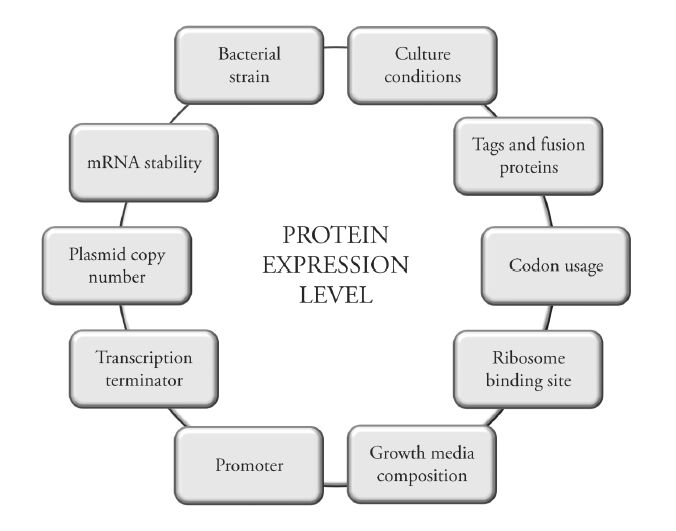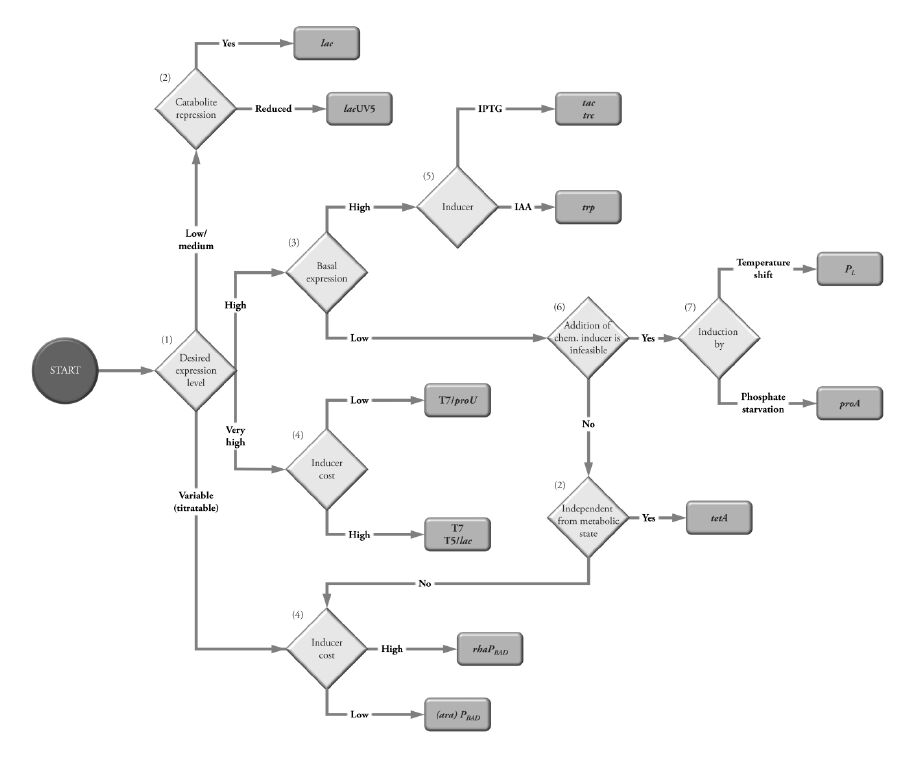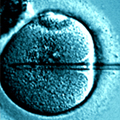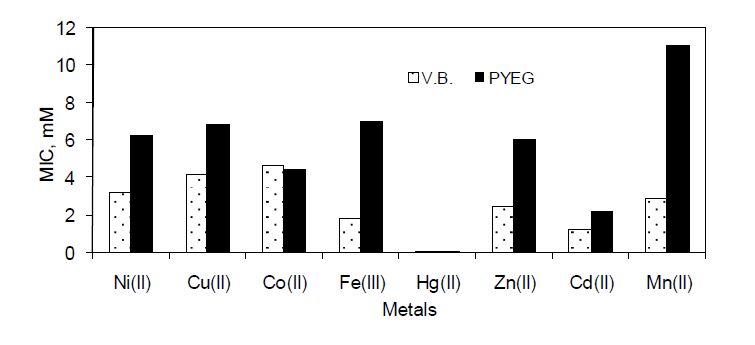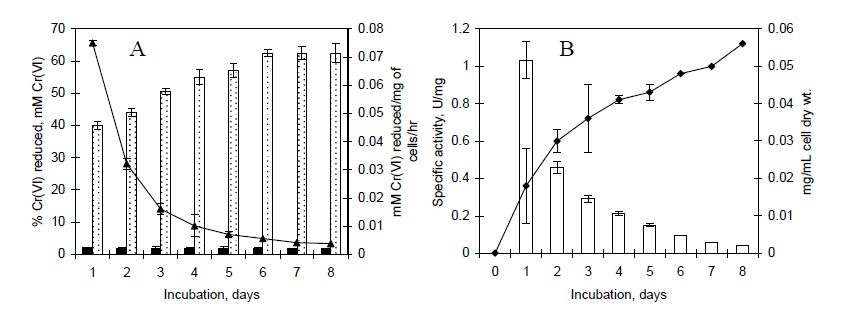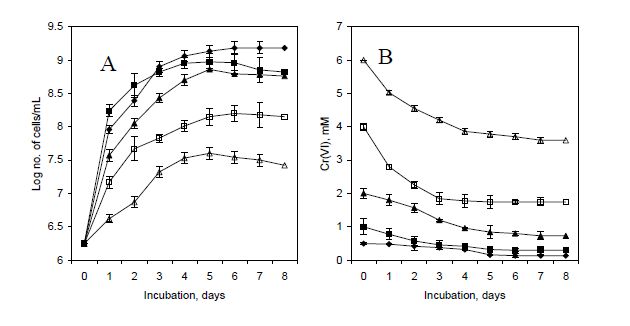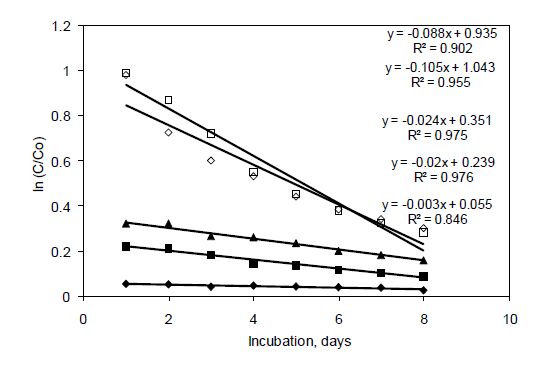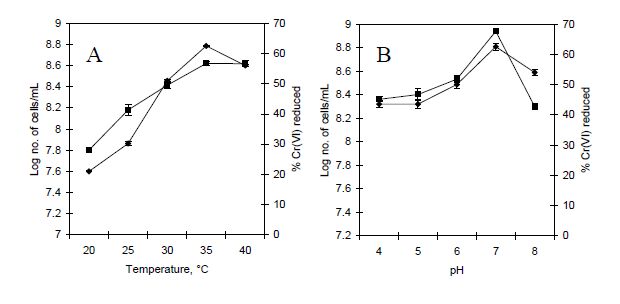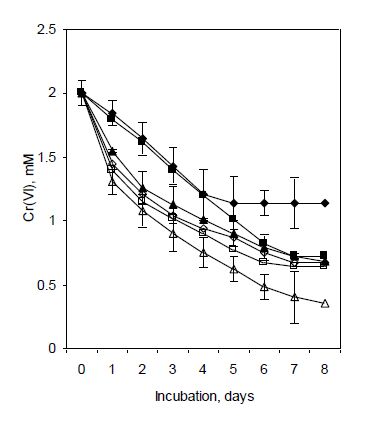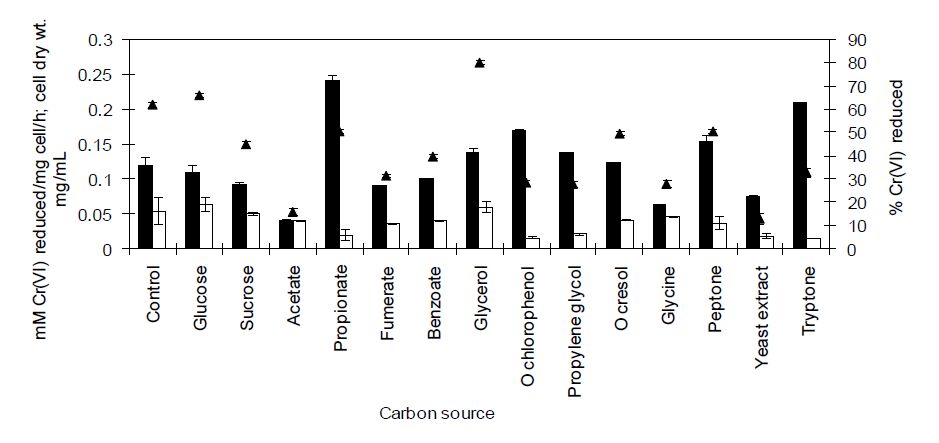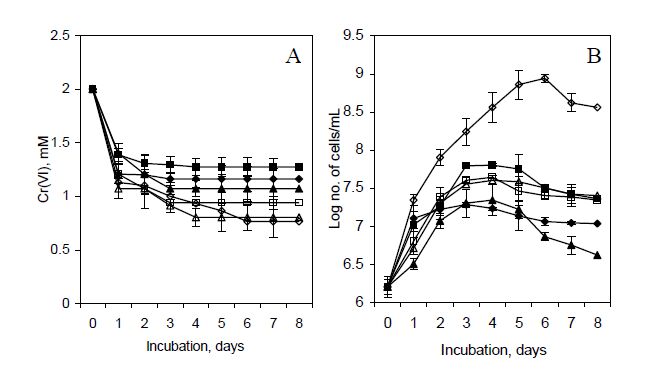1. Introduction
Bacteria are widely known as one of the most abundant and ubiquitous groups of living organisms known to man. Their importance to life science research over the past decades cannot be overstated. The prevalence of bacteria can be attributed not only to their high diversity, exceptional evolvability and short generation time but also to their robust mechanism of gene regulation. Individual bacterial cells can quickly and efficiently adapt to new environment by redirecting their metabolic flux and adjusting their protein content in response to external stimuli (e.g.¸ the production of β-galactosidase, lactose permease, and galactoside O-acetyltransferase by Escherichia coli in response to the presence of lactose in a glucose-deficient medium) [1,2]. Such a tight control of catabolic, biosynthetic and stress-response pathways (to name but a few) within the cell allows for a highly efficient utilization of naturally scarce resources.
Recent advances in our understanding of prokaryotes have provided the scientific community with an expanding molecular toolbox for altering and manipulating the genetic makeup of various bacterial species. Our ability to engineer biological organisms for useful purposes has sparked the development of synthetic biology and metabolic engineering. Despite the growing number of enabling technologies, transcriptional regulation still takes the centre stage in engineering prokaryotic organisms. Careful selection of promoters plays a critical role in maximizing the yield of bioproduct(s) and, as a result, is key to biomanufacturing industry [3,4]. While bioprocess specialists are, more often than not, interested in strong, inducible promoters with low or nonexistent basal expression profiles, metabolic engineers and synthetic biologists utilize various types of promoters for their work, which includes, but is not limited to, the design of genetic circuits and construction of heterologous biosynthetic pathways [5]. Consequently, the demand for reliable and well-characterized promoters of different types is steadily increasing in various areas of biological research. As basic techniques of promoter engineering and characterization are becoming more and more accessible, there has been a large number of exciting developments in the field of transcriptional regulation in recent years.
In this article, we aim to provide a comprehensive overview of bacterial promoter research and engineering, with an emphasis on their applications in recombinant protein production, synthetic biology and metabolic engineering. First, we give a brief outline of prokaryotic gene regulation from a theoretical standpoint, highlighting the ramifications of biological complexity and ubiquity of nonlinear biomolecular interactions in the context of promoter engineering and design. Subsequently, we explore the role of promoters in large-scale protein production, discussing promoter selection criteria and recent advances in this area. This is followed by a summary of scientific endeavors in the field of synthetic biology and metabolic engineering that are centered around transcriptional regulation. We delve into the subject of promoter databases and associated bioinformatics tools, and the idea of describing promoters as standardized biological parts is carefully scrutinized. The review concludes by highlighting emerging technologies that complement transcriptional regulation and exploring future prospects of this research area.
2. Theoretical Background
Over the past half a century, gene regulation in bacteria has been extensively studied and, although many fine details concerning their complex regulatory mechanisms are still unknown, a major progress has been made in our understanding of their cellular machineries. Mechanism of DNA transcription, promoter architecture and three-dimensional structures of transcription factors are only a few examples of what the scientific community has gathered, over this short time period, through combination of ingenious experimentation and rigorous data analysis. This information has enabled not only the development of more advanced molecular tools for engineering prokaryotic organisms but also shed light on far more complex mechanisms of eukaryotic gene regulation.
Escherichia coli has been extensively studied as a model system for bacterial gene regulation. Since the inception of gene transcription studies, promoters have been described as one of the most fundamental regulatory elements present in bacterial operons. Based on numerous sequencing experiments, their relatively simple architecture has been determined and is widely available (Figure 1) [7,8,9]. Promoters, however, should rarely be analyzed in isolation—it is the complex interplay between a promoter (including its operators), RNA polymerase holoenzyme, transcription factors and effector molecules that gives rise to different rates of transcription initiation [6,10], which, more often than not, significantly influence the final expression levels of regulated proteins. Even a single-base substitution or deletion can have a detrimental effect on binding energies of DNA-protein and protein-protein complexes [11,12] and, consequently, alter the properties of the whole system. Moreover, interactions between individual elements of the regulatory system are not always linear. For example, stronger binding between RNA polymerase holoenzyme and the promoter sequence is frequently associated with a higher rate of transcription initiation. However, increased stabilization of RNA polymerase complex sometimes has an opposite effect—transcription inhibition can be achieved by preventing RNA polymerase from leaving the promoter (e.g., phage φ29 regulatory protein p4 that binds to A2c promoter acts as a transcription repressor via this mechanism) [13]. The underlying biological complexity makes engineering of promoters a very challenging task and favors the use of random and semi-rational strategies such as directed evolution for this purpose.
The subject of transcriptional gene regulation in bacteria has been covered from a theoretical standpoint in many excellent reviews [14,15] and textbooks devoted to general biochemistry and molecular biology. As such, we kindly invite the readers interested in exploring, in more details, the theoretical basis of bacterial gene regulation to refer to these resources.
3. Promoter Engineering
In light of biological complexity, discussed in the previous section, de novo design is not a method of choice for acquiring novel prokaryotic promoters. Most of the new bacterial promoters of biotechnological significance are a direct result of promoter engineering or, more specifically, one of the three main strategies of prokaryotic promoter engineering—saturation mutagenesis of spacer regions (Figure 1), error-prone PCR and hybrid promoter engineering [5].
During saturation mutagenesis of spacer regions, mutagenic oligonucleotides are designed to vary the nucleotide sequence surrounding −35 and −10 motifs (Figure 1). This semi-rational strategy relies on the fact that extensive changes to promoter consensus regions, in most cases, significantly decrease binding of RNA polymerase molecule. Consequently, leaving them unchanged allows for a drastic decrease in the number of non-functional promoter variants. Moreover, varying the spacer length is often unnecessary as the variable region between the two motifs has a constant optimal length (17 base pairs in the case of many E. coli promoters) [16,17]. This strategy has been used, for example, to create a library of synthetic promoters of varying strength for bacteria Lactococcus lactis [18] and Lactobacillus plantarum [19].
A complementary strategy to saturation mutagenesis of spacer regions is error-prone PCR, which was used, in combination with green fluorescent protein (GFP) expression and flow cytometry, to modify constitutive bacteriophage PL promoter and create a library of 22 synthetic promoters of varying strength [20]. Both methods, saturation mutagenesis of spacer regions and error-prone PCR, are claimed to be fairly equal in terms of advantages they offer, with the major difference being that error-prone PCR involves screening libraries with a lower fraction of functional promoters (Table 1).
Table 1. Comparison between the two main strategies of promoter engineering—saturation mutagenesis of spacer regions and error-prone PCR (based on the information provided in [18,20,91])
|
Saturation mutagenesis of spacer regions |
Error-prone PCR |
| Target |
Spacer regions |
Whole promoter |
| Theoretical library size |
>417 |
>435 |
| Fraction of functional library members |
>50% |
<1% |
| Reported screening technologies |
Colorimetric assays |
Colorimetric assays Flow-cytometry |
| Reported variation in promoter strength |
400-fold |
196-fold |
The third strategy of obtaining new synthetic promoters is hybrid promoter engineering, which involves merging promoter parts from different sources. For example, widely-used tac promoter is a hybrid of trp and lac promoters [21]. The region upstream of −20 position, with respect to transcriptional start site, derives from trp promoter whereas the rest originates from lacUV5 promoter (mutant of lac promoter that is no longer sensitive to catabolite repression). The resultant promoter is 3 and 11 times more efficient than trp and lac promoter, respectively, and remains inducible by isopropyl β-D-1-thiogalactopyranoside (IPTG). Other examples of hybrid promoters include Bacillus subtilis PSPAC promoter [22] and E. coli rhaPBAD expression system [23].
It is worth mentioning that advances in the field of promoter engineering come not only from new methods of creating combinatorial libraries but also from developments in screening technologies. As mentioned, the use of GFP expression along with flow cytometry allowed for high-throughput screening of promoter library and identifying promoter variants of different strengths [20]. This approach facilitates screening of large combinatorial libraries, the size of which, however, is limited by bacterial transformation efficiency. In vitro compartmentalization, a method of utilizing a water-in-oil emulsion and in vitro transcription/translation to create vast combinatorial libraries [24], was successfully used for directed evolution of peptides [25], ribozymes [26] and proteins [27,28,29,30]. Recently, this technique was demonstrated to be applicable to promoter engineering - the use of in vitro compartmentalization led to identification of T7 promoter variant with 10 times higher in vitro transcriptional activity [31].
The subject of promoter engineering has been extensively covered, in the context of both prokaryotic and eukaryotic organisms, in the comprehensive review written by Blazeck and Alper [5].
4. Protein Expression and Promoter Selection
Owing to their short generation times and relative ease of genetic manipulations, bacteria are widely utilized as protein expression platforms, despite their inability to perform post-translational modifications [32]. E. coli is, without a doubt, a workhorse of bacterial protein manufacturing, accounting for the production of nearly a third of 211 biopharmaceuticals approved by the end of year 2011 [33,34]. Several Bacillus species (i.e., Bacillus brevis, Bacillus megaterium and Bacillus subtilis) are also used as common biomanufacturing platforms. Nonetheless, their use is mainly limited to production of homologous enzymes (e.g., proteases and amylases) [35,36]. Rapid advances in genetic engineering and constant development of new molecular tools have contributed to the identification of new platforms for recombinant protein production—for examples, several bacterial species belonging to Pseudomonas genus (e.g.¸ Pseudomonas fluorescens) have been reported to provide a protein yield comparable or even higher than E. coli and were utilized for biopharmaceutical production [37,38]. Various other bacterial species, distinct from E. coli, are sometimes used for industrial-scale protein production, however, the prevalence of such cases still remains quite low [3,38].
Selecting the right host organism is only one example among a myriad of different variables (Figure 2) that one has to consider to maximize the production yield of functional protein [4,36,39,40,41]. Among these decisions, an appropriate promoter is, arguably, one of the most crucial and impactful factors. In many cases, when protein production is concerned, the desired specifications of a promoter are well-defined—it should allow for a robust, responsive and low-cost induction, exhibit a relatively low basal expression level, and enable a high yield of functional protein. Unfortunately, looking through the list of most common E. coli expression systems and their properties (Table 2), it becomes immediately apparent that these criteria are often at odds with one another. For example, T7 expression system, characterized by the highest expression level, is associated with one of the most expensive inducers (i.e., IPTG) and a considerable basal expression level [42]. To be fully functional, T7 promoter also requires the presence of T7 RNA polymerase, which has to be encoded on an additional plasmid or, more commonly, within the bacterial chromosome—e.g., E. coli BL21 (DE3), C41 (DE3) and C43 (DE3). Further, it is vital to note that the strength of a promoter does not always correlate with the final yield of functional protein. T7 promoter is notorious for producing a high fraction of insoluble protein, which frequently aggregates into intracellular inclusion bodies [43,44]. Finally, a low expression level or low promoter leakiness is sometimes advantageous when expressing membrane proteins or other toxic biomolecules [3,41]. As a result, the choice of an appropriate expression system is often dependent on the target protein itself and, consequently, the promoter selection remains a challenging, yet crucial task. To enable easier navigation among the various selection criteria and facilitate the process of promoter selection, the decision diagram presented in Figure 3 provides an easy way of determining which of the commonly used inducible expression systems is the most adequate for a given application.
Table 2. Most commonly-used inducible E. coli expression systems and their important properties (adapted and modified from [3] and [4]; inducer prices are based on the information provided by Sigma-Aldrich Corporation, http://sigmaaldrich.com)
| Name |
Expression level |
Basal expr. |
Catabolite repression |
Inducer |
Inducer cost |
References |
| lac |
Low-medium |
High |
Yes |
IPTG |
High (63.90 $/g) |
[45] |
| lacUV5 |
Low-medium |
High |
Reduced (1) |
IPTG |
High (63.90 $/g) |
[46,47] |
| trp |
High |
High |
No |
IAA (2) |
High (61.20 $/g) |
[48,49] |
| tac |
High |
High |
Reduced (1) |
IPTG |
High (63.90 $/g) |
[21] |
| trc |
High |
High |
Reduced (1) |
IPTG |
High (63.90 $/g) |
[50] |
| phoA |
High |
Low |
No |
Phosphate starvation |
- |
[51,52] |
| PL |
High |
Low (3) |
No |
Temperature shift |
- |
[53,54] |
| tetA |
Medium-high (4) |
Low |
No |
Anhydrotetracycline |
Low (1.67 $/mg) (5) |
[55] |
| araBAD (PBAD) |
Low-high (4) |
Low |
Yes |
L-arabinose |
Low (2.30 $/g) |
[56,57] |
| rhaPBAD |
Low-high (4) |
Low |
Yes |
L-rhamnose |
High (61.30 $/g) |
[23] |
| T5/lac |
Very high |
High |
Reduced |
IPTG |
High (63.90 $/g) |
[58,59,60] |
| T7 (6) |
Very high |
High (7) |
Reduced (1) |
IPTG |
High (63.90 $/g) |
[61] |
| T7/proU |
Very high |
Low |
No |
NaCl |
Very low (40 $/kg) |
[62] |
(1) The mutation of lac promoter reduces its sensitivity to catabolite repression,however,it does not fully eliminate it [41].
(2) IAA denotes 3-β-indoleacrylic acid. The promoter can also be induced by low intracellular level of L-tryptophan (nutrient starvation) [4,49].
(3) At 29-30°C - the temperature at which repressor cI857 is fully functional [63].
(4) Titratable.
(5) The amount of anhydrotetracycline commonly used for full induction of tetA promoter (200 μg/l) is,on average,100-1000 lower than the amount of chemical inducer required for induction of the remaining promoters [3,48].
(6) Includes both lac- and lacUV5-based expression systems.
(7) New strategies,which aim to provide lower basal expression levels of T7 expression system,have been developed [42,64]. |
Since many promoters exhibit, at least some, undesirable properties, it is not surprising that different strategies, including promoter engineering, have been utilized to enhance their characteristics or even develop novel expression systems (e.g. propionate-inducible [65] and cumate-inducible [66] expression systems). Among different goals of these endeavors, efficient production of toxic proteins is prioritized [67]. The development of E. coli expression system dependent on ferric uptake regulator (Fur), which exhibits a relatively high expression and tight regulation, represents an encouraging progress in this area [68]. Table 3 provides a comprehensive overview of some recently-reported expression systems developed for three prokaryotic groups of major bioprocessing importance—E. coli, Bacillus spp. and Pseudomonas spp.
Table 3. Novel expression systems developed for Escherichia coli, Bacillus spp. and Pseudomonas spp. over the last decade
| Organism |
Name |
Important characteristics |
Reference |
| E. coli |
Propionate-inducible expression system (PprpB) |
· Homogenous expression |
[65] |
| · Wide range of inducer-dependent expression level |
| Cumate-inducible expression system |
· Tight regulation |
[66] |
| · High-level and homogenous expression |
| · Wide range of inducer-dependent expression level |
| Gene expression system Hsh |
· Heat-shock inducible expression |
[69] |
| · Very high expression level |
| pLAI expression system |
· Expression triggered by high-cell density |
[70] |
| · Tight regulation |
| · Low-level basal expression |
| Fur-dependent expression system (PfhuA) |
· Tight regulation |
[68] |
| · Suitable for toxic protein synthesis |
| B. subtilis |
Subtilin-regulated gene expression (SURE) |
· Very high expression level |
[71] |
| · Low-level basal expression |
| · Not subjected to catabolite control |
| Maltose-inducible expression system |
· High-level expression |
[72,73] |
| Cold-inducible expression system |
· Temperature-inducible expression |
[74] |
| B. megaterium |
Sucrose-inducible promoter system (PsacB) |
· Alternative to a well-established xylose-inducible
promoter system (comparable expression levels) |
[75] |
| T7 RNA polymerase-dependent expression system |
· High-level expression |
[76] |
| · Reported difficulties with extracellular protein
expression |
| Pseudomonas spp. |
PBAD-based shuttle vectors |
· Highly-regulated expression |
[77] |
Addition of chemical inducer to bacterial culture could be problematic (e.g., potential of contamination) and expensive in large-scale protein production. There are research efforts to alleviate this problem. The use of temperature-inducible promoters, such as bacteriophage PL promoter under the control of temperature-sensitive repressor cI857, is a potential solution to this problem [53,54]. However, heating large volumes of fermentation broth is not only challenging from engineering and economic standpoints, but can have implications for the stability of temperature-sensitive proteins. As a result, the introduction of auto-induction media for T7 expression system is regarded a major breakthrough in protein expression [78]. The auto-induction medium contains a substantial amount of glucose, which in combination with other specified culture conditions inhibits protein production at the early stage of cell growth; only after glucose is depleted, protein expression takes place [78,79]. The widespread adoption of this method has motivated other researchers to develop new strategies of auto-induction. For instance, utilization of quorum sensing system from Vibrio fischeri allowed for creating E. coli expression system that couples protein production with cell density [70].
Recent emergence of robust cell-free expression systems [80,81,82] necessitates the development of promoters that are fully compatible with in vitro transcription/translation mixtures. As discussed above, the use of in vitro compartmentalization allowed for identification of T7 promoter mutant with a 10 times higher in vitro transcriptional activity [31]. Moreover, studies on transcription factors and RNA polymerase bring a wealth of information that could prove invaluable for promoter engineering. For example, T7 RNA polymerase mutation that decreases its propensity for abortive transcription and, consequently, increases its in vitro transcription efficiency, was reported [83].
5. Synthetic Biology and Metabolic Engineering
The two emerging areas of biological research, synthetic biology and metabolic engineering, have been, for quite some time, a rich source of invention and scientific progress. Regardless of some differences between the two disciplines—e.g., synthetic biology is in principle more concerned with de novo design, whereas the efforts of metabolic engineers are concentrated on modifying existing biological pathways (both endogenous and heterologous)—they both share the common goal of devising useful biological systems. As a result, it is also not surprising that both disciplines are currently deeply intertwined [84].
In contrast to heterologous protein production, metabolic engineering is characterized by a frequent use of constitutive promoters [85]. Because construction of optimized metabolic pathways usually requires expression of individual genes to be at different, yet well-defined levels, there exists a high demand for libraries of synthetic constitutive promoters of different strength. As mentioned in the promoter engineering section, both saturation mutagenesis of spacer regions and error-prone PCR have been extensively used to create such libraries [18,19,20].
Altering promoter strength is one of the main methods of optimizing metabolic pathways. Due to this fact, various inducible promoters play an essential role in the development of metabolic engineering. Use of inducible araBAD expression system allowed for modulating individual gene expression levels (by changing arabinose concentration) and, consequently, removing a bottleneck from E. coli mevalonate pathway [86]. By utilizing promoters of different strength (lac, lacUV5 and trc), Anthony et al. alleviated two pathway bottlenecks and achieved a 5-fold increase in amorphadiene production, a precursor to anti-malarial compound [87]. Finally, T5, T7 and trc inducible promoters were used to carefully optimize two metabolic pathways in order to maximize the titers of taxadiene, a precursor to potent anticancer drug Taxol [88]. A 15000-fold increase in its production was reported.
Inducible expression systems are also a central part of synthetic biology. Genetic circuits constitute a great example of how simple biological components, including promoters, can be assembled into fully functional biological systems with complex properties, which significantly differ from the properties of the individual components. For instance, combining three transcriptional repressor systems resulted in construction of a synthetic oscillatory network, with typical period of hours [89]. On the other hand, use of two repressible promoters arranged in a mutually inhibitory network allowed for the development of a genetic toggle switch in E. coli [90]. Recently, design and construction of genetic circuits moved towards the closer integration between synthetic and endogenous circuitry [89]—e.g., B.subtilis gene circuit responsible for inducing transient cell competency was analyzed in details and re-engineered to prevent the cells from exiting the competency state [91].
6. Databases and Bioinformatics Tools
The advances in promoter engineering and the steady growth in the number of available promoters have sparked the development of complementary databases and bioinformatics tools. One of the most known databases of biological parts is the iGEM registry (recognized also under the name of the Registry of Standard Biological Parts; http://parts.igem.org). The database contains hundreds of functional promoters and is used each year by students around the world to construct functional biological systems as part of the International Genetically Engineered Machine (iGEM) competition. The listed promoters conform to the BioBrick standard, allowing for their quick assembly together with other functional components provided by the repository [92]. The database consists of both inducible and constitutive promoters, including a set of 20 constitutive promoters of various strengths. The vast majority of promoters listed in the iGEM registry are designed with E. coli in mind, however, the number of functional components conforming to the BioBrick standard created for use with other organisms, e.g., Bacillus subtilis, is slowly increasing [93]. It should be noted that all promoter entries present in the database provide information about their DNA sequence, allowing for their in-house or commercial synthesis, thereby alleviating the need of requesting them from the registry. Promoter databases other than the iGEM registry have been created—for example, PromEC database provides DNA sequences of all endogenous E. colipromoters (excluding their regulatory elements) [94] and DBTBS da
tabase lists upstream regulatory elements of B. subtilis [95,96,97]. Nevertheless, they often provide little to no information about properties of the listed promoters.
Much effort in the area of bioinformatics concerned with prokaryotic microorganisms has been devoted to the development of reliable promoter prediction tools. Their usefulness is certainly not limited to facilitating the identification of novel regulatory elements—they constitute an essential part of genome analysis and annotation. As a result, the advances in promoter recognition and the developments in the field of operon prediction software are often closely intertwined. Finally, the ability to reliably detect promoter sequences can help immensely in preventing introduction of unwanted transcription initiation sequences when creating biomolecular constructs [98]. A great example of the program capable of predicting prokaryotic promoters and regulon is PePPER [99]. This web server allows for a quick identification of prokaryotic promoters based on the recognition of −35 and −10 promoter DNA motifs. This prediction is not error-free and, consequently, the existence of both undetected sequences and false positives should be taken into account when analyzing results from this program. Other programs useful for promoter discovery and identification include phiSITE, a database of gene regulation elements in bacteriophages [100], and Suite for Computational identification Of Promoter Elements, SCOPE—a web server for identification of potential regulatory motifs [101,102].
It is worth mentioning that the list of bioinformatics tools aiming to expedite the design of synthetic biological systems, from individual components, is steadily increasing and includes programs such as GenoCAD [103], TinkerCell [104] and Synthetic Biology Software Suite (SynBioSS) [105,106]. These programs aim to mimic computer-aided design (CAD), hugely popular among many engineering disciplines, and bridge the gap between the vast amount of biological data and computational modeling. In comparison to the original engineering programs, however, these tools still lack certain functionalities. One of which is incorporating functional properties of individual biological parts (e.g., promoter activity).
7. Standardization and Quantification of Promoter Strength
The availability of standardized and well-defined biological components is one of the main premises of synthetic biology [107,108] and one of the most promising methods of accelerating the development of biological research. The iGEM registry constitutes the first step towards standardization of biological components by providing a common method of assembling them into complex biomolecular constructs (all functional DNA sequences are flanked by well-defined restriction sites) [92]. However, the highlighted standardization is only limited to the assembly method, and does not encompass functional characteristics of each part, e.g., promoter strength. As a result, judicious choice of promoter remains a challenging task, especially when a well-defined expression level is desired.
The main obstacle to standardization of promoters and its activity is biological complexity. Most often than not, whenever a new promoter is discovered or engineered, its activity is determined indirectly, by measuring expression level of a reporter protein, e.g., green fluorescence protein (GFP). However, very frequently such a result is not very reliable as the protein expression level is not only dependent on the rate of transcription initiation but also on a myriad of different factors (Figure 2). As a result, the reported protein expression level can be reproduced only when all the other parameters remain the same, e.g., the amount of produced protein will increase when a plasmid with a higher copy number is used. Furthermore, there are significant differences in the accuracy of various methods of protein expression quantification. For example, measuring protein activity (e.g., fluorescence of GFP) usually does not provide any information about the amount of insoluble protein present in the cell—the in-depth comparison of T7, trc and lacUV5 promoters showed that lacUV5, the weakest promoter among the three, produces the highest fraction of soluble protein [43]. In a similar study, five expression systems (Lacl/PT7, Lacl/Ptrc, AraC/PBAD, XylS/Pm and XylS/Pm ML1-17) were compared using a variety of different methods, including mRNA quantification, activity measurements, polyacrylamide gel electrophoresis and flow cytometry [44]. T7 promoter was confirmed to produce the highest amount of RNA transcript, which resulted in a correspondingly high production of insoluble protein. In addition to providing invaluable information about the five promoter systems, the study brought attention to the differences in protein expression between individual
cells, indicating differences in culture homogeneity between the investigated promoter systems.
An important milestone in standardization of bacterial promoters and its activity has been the introduction of Relative Promoter Unit (RPU) [109]. In their research paper, Kelly et al. argue that the most representative and unbiased indicator of promoter activity is the rate of transcription initiation. The accurate determination of absolute transcription initiation rate proves to be very challenging, if not impossible, and as a result its usefulness for describing promoter activity had been limited for a long time. It is shown, however, that under right experimental conditions relative rate of transcription initiation is approximated by the ratio of GFP synthesis rates of two promoters, the quantity that can be fairly easily determined experimentally. By measuring promoter activity relative to a standard promoter (BBa_J23101 in this case), the variation in the obtained results can be reduced by about 50%. As a result, the concept of RPUs allows for a more reliable comparison between different promoters and paves the way for comprehensive standardization of bacterial promoters.
8. Complementary Technologies
The regulation of transcription initiation is certainly not the only method of influencing the protein expression level. Modulating mRNA stability has been, for quite some time, one of the strategies of engineering gene expression [110,111,112,113]. Similar to promoters, ribosome binding sites (RBSs) can be designed to provide a specified rate of mRNA translation and, consequently, protein expression; in addition, based on thermodynamic calculations the strength of RBSs can be predicted in silico [114]. Another approach, which allows for fine-tuning of gene expression, involves engineering of intergenic regions within a single operon—various post-transcriptional control elements were recombined and screened for a desired expression, leading to 100-fold variation in the relative expression levels [115]. Methods utilizing protein scaffolds [116] and riboswitches [117] were also reported. Despite the great variety of the presented strategies, promoter selection still remains an integral part of these experiments and, as a result, advances in promoter engineering are still driving the development of genetic engineering and biotechnology. Additionally, the highlighted methods of modulating protein expression should be perceived as being complementary to promoter engineering rather than being in a direct competition to one another. The ability to manipulate more than one type of regulatory elements became one of the hallmarks of several recently proposed methods of engineering prokaryotic organisms via simultaneous alteration of multiple gene expression. Multiplex automated genome engineering (MAGE) targets many locations on a bacterial chromosome via the use of degenerate oligonucleotides [118]. Oligonucleotide-mediated sequence replacement can be used to target both genes and various regulatory elements. Targeting of ribosome binding sites allowed for the optimization of the 1-deoxy-d-xylulose-5-phosphate (DXP) biosynthesis pathway in E. coli and obtaining a 5-fold increase in lycopene production. Worthy of note, the whole experimental procedure was fully automated. On the other hand, trackable multiplex recombineering (TRMR) uses synthetic DNA cassettes to replace endogenous promoters or ribosome binding sites [119]. This strategy, in combination with the utilization of molecular barcoding and microarrays, led to mapping of E. coli genes that confer a growth advantage in various media and in the presence of several growth inhibitors.
9. Conclusion
Judging by the variety of recombinant proteins produced using prokaryotic organisms and the diverse applications of bacterial promoters in the emerging fields of biological research, it would be unwise to assume that a single expression system, robust and versatile enough to meet all demands of the scientific community, will be constructed in the near future. It is much more plausible that the rapid expansion of promoter engineering [5], accelerated by the developments in the high-throughput screening technologies [31], will provide us with an abundance of bacterial promoters with unique characteristics. As the number of available expression systems is expected to rise continually, it is imperative that promoter selection procedures are expedited and streamlined by further developing enabling bioinformatics tools, expanding existing databases, and adopting a unified method of measuring and quantification of promoter activity. Only then, the key goal of synthetic biology—construction of functional and well-defined biological systems from standardized biological components—can be fully realized.
Acknowledgments
We thank the Department of Chemical and Biological Engineering, ChELSI Institute and EPSRC (EP/E036252/1) for financial support.
Conflict of Interest
All authors declare that there are no conflicts of interest.









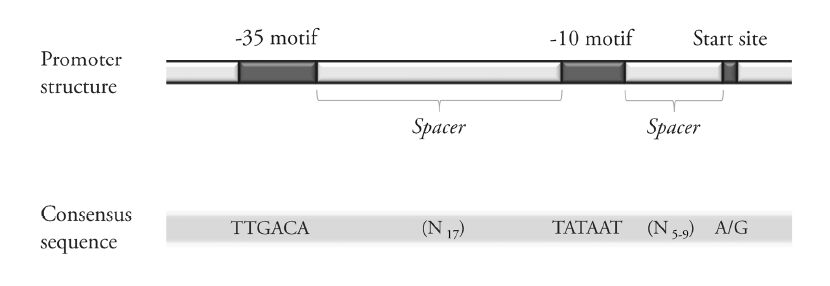
 DownLoad:
DownLoad: 